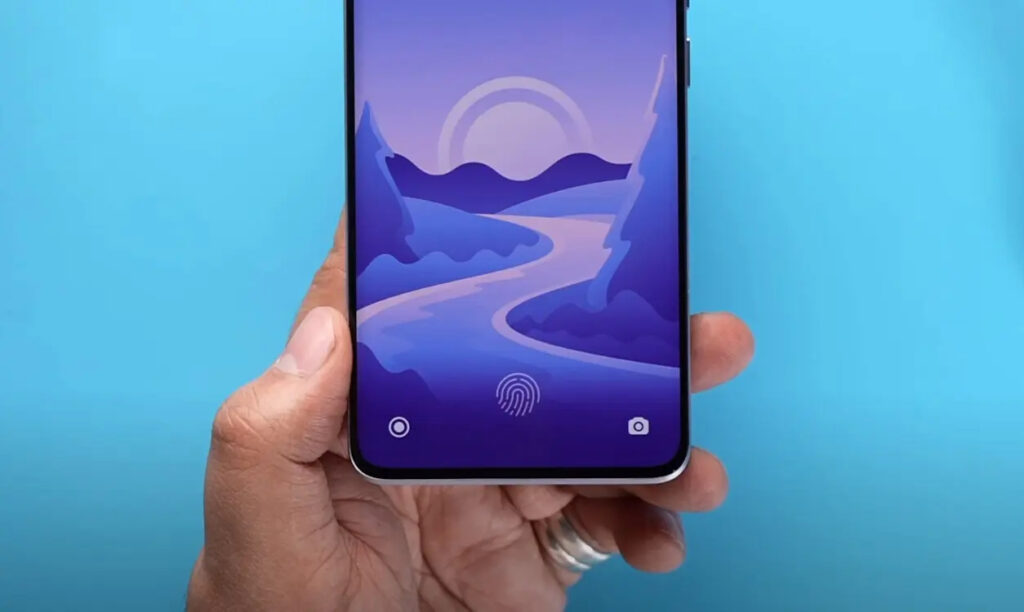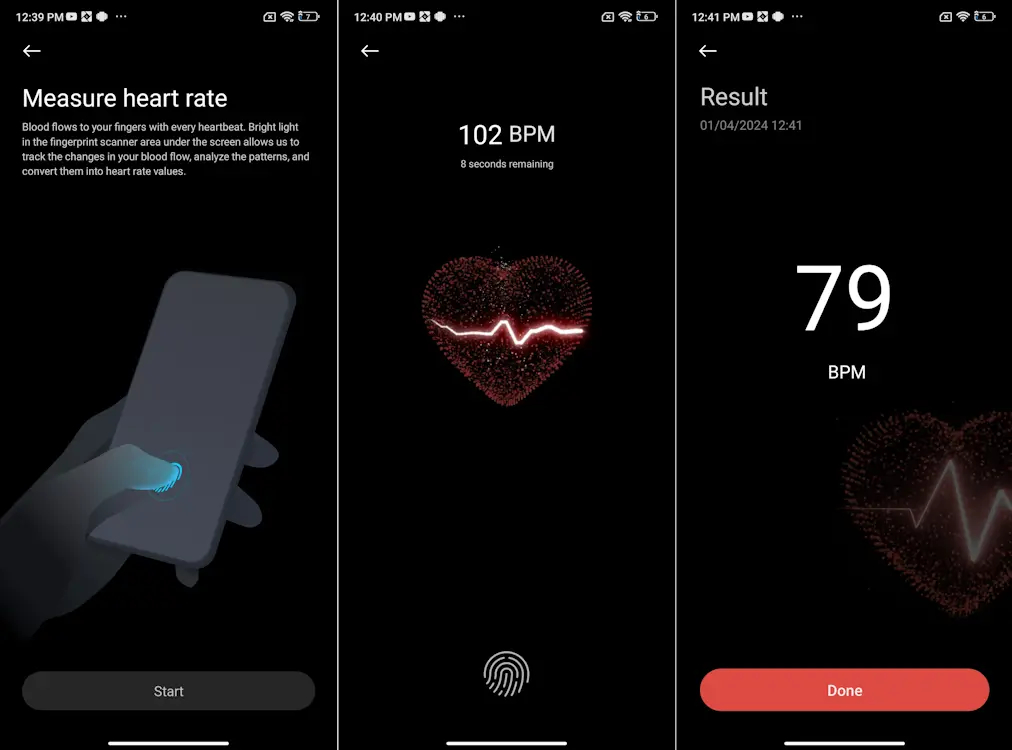
Today, Xiaomi unveiled the Redmi Note 13 series in India, and initially, the arrival of the Note 13 Pro+ at the AzMo Tech office didn’t particularly catch my attention. After all, Xiaomi launches numerous phones each year probably around 50 and I don’t anticipate every single one. However, everything changed when a coworker mentioned the presence of a heart rate monitor in the new Note 13 Pro and 13 Pro+. That tidbit piqued my curiosity, prompting me to delve deeper into this latest release.
Redmi Note 13 Pro/ Pro+: Heart Rate Monitor
I’ll be honest, when the Google Pixel 8 Pro introduced a temperature sensor, I was left with a perplexed “why?” expression. And, I have to admit, that same reaction surfaced when I discovered the peculiar feature on the Redmi Note 13 Pro models. The in-display fingerprint sensor, a debut for the Redmi Note series, also functions as a heart rate monitor.
It’s interesting, right? Surprisingly, Xiaomi didn’t delve into this feature much during the launch event. In fact, there was only a single slide briefly mentioning this capability, which definitely caught my attention and left me intrigued.
It’s fascinating how this feature managed to fly under the radar, even catching your attention during the event. Upon digging deeper, it appears that Xiaomi introduced a similar functionality in the Xiaomi 13 earlier this year. Furthermore, a comparable feature was present within the Mi Health app as far back as 2020, enabling Xiaomi phones to utilize the camera flash for heart rate monitoring and scanning.
Samsung indeed made waves in 2014 with the Galaxy S5, incorporating similar technology into their device. Now, having this capability integrated into the in-display fingerprint sensor certainly adds convenience. On paper, it does sound intriguing to have such a feature on your phone. However, the real question lies in its performance, how does it actually fare in practical use?
Redmi Note 13 Series: Testing Heart Rate Detection
It sounds like you’re ready for an intriguing experiment! Gathering the necessary tools for your test, a borrowed Apple Watch Series 7, another Xiaomi phone with the same feature, and some cooperative coworkers, is an excellent setup.
Using the feature seems pretty straightforward. Just open the dedicated Heart Rate app on the Redmi phone and follow the prompts by placing your finger on the fingerprint sensor. It’s exciting to see how this feature performs in action, especially with some comparison data from other devices and methods!

It’s great to see your thorough testing approach! Comparing the heart rate detection feature on the Redmi Note 13 Pro/Pro+ with the Xiaomi 13 Pro and the highly accurate Apple Watch 7 provides valuable insights.

Upon reviewing the data, it appears that the Xiaomi 13 Pro yielded more accurate results than the Note 13 Pro+ in our tests. However, it seems like the heart rate sensor on the new Redmi phones might have been somewhat erratic, perhaps providing readings that seemed inconsistent. Additionally, the sensor on the Note 13 Pro models registering readings through your jacket sleeve may have contributed to inaccuracies, resulting in notably off readings.
It’s interesting to note the differences in how these devices captured your heart rate in specific instances, such as during your triple sneeze. The Apple Watch Series 7 promptly registered the spike in heart rate, recording a significant increase from 98 BPM to 113 BPM, eventually stabilizing around 101 BPM after a few seconds.
Contrastingly, the heart rate sensors on the Xiaomi phones didn’t capture that spike during the sneeze. Additionally, despite maintaining still fingers during the heart rate scan, encountering a ‘Start over‘ message multiple times suggests some inconsistencies or challenges in the sensor’s performance during those instances.

Absolutely, it’s becoming evident that this dual-functionality of the fingerprint sensor as a heart rate sensor might not match the accuracy of dedicated fitness bands. It’s crucial to note that the company doesn’t position this feature as medically accurate.
Seems like Redmi aimed to add more features to the Note series by introducing the in-display fingerprint sensor for the first time. The allure of heart rate detection, on paper, does seem appealing to users. However, it’s essential to maintain a level of skepticism regarding the accuracy of readings from this sensor. If you encounter peculiar or inconsistent readings, it’s wise to refrain from making medical assumptions and instead consult with a healthcare professional.
Ultimately, this feature might end up being one of those forgotten functionalities on your phone, similar to the Pixel 8 Pro’s temperature sensor or the Glyph lights on the Nothing Phone. Although, those latter two might have occasional practical uses compared to the heart rate sensor’s reliability.

Fantastic site A lot of helpful info here Im sending it to some buddies ans additionally sharing in delicious And naturally thanks on your sweat